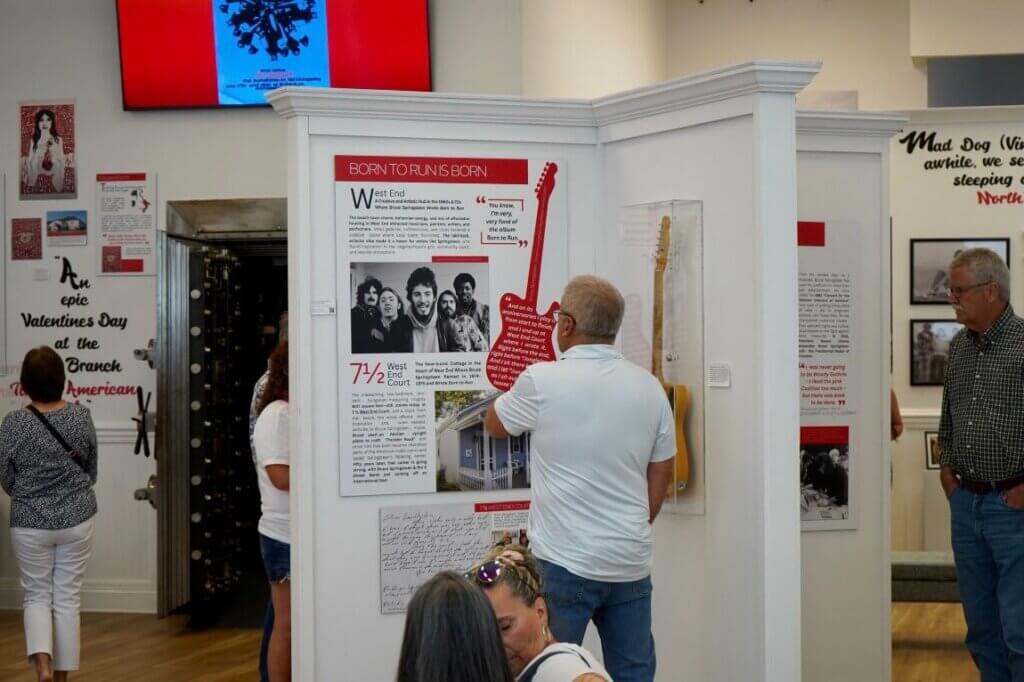When asked what New Jersey towns they associate with Bruce Springsteen, most people would probably say Freehold (where he was raised) or Asbury Park (where the rich music scene so inspired him as a budding musician). But Springsteen’s history with the city of Long Branch also runs deep. It’s a connection worth exploring while we mark the 50th anniversary of his landmark album Born to Run, as Springsteen wrote many of the songs that would appear on the album while living in the seaside town.
But Bruce’s connection to Long Branch began long before that pivotal moment in 1974/1975. He was born in the city, and it, like much of the Jersey Shore, played a key role in shaping Springsteen’s storytelling as he grew into adulthood. The city’s mood and characters helped inspire his vivid portraits of American life, and to this day fans often visit Long Branch as part of a Springsteen pilgrimage, honoring the city’s role in his early career and songwriting legacy.
“Freehold”
No one likes to correct their Boss, but when Bruce sings, “I was born right here on Randolph Street in Freehold,” that’s not technically true. (And ok, I’m sure he didn’t literally mean it that way.) He was born on September 23, 1949 at Monmouth Memorial Hospital in Long Branch, to parents Douglas and Adele Springsteen. (Fun fact: the local papers spelled their last name “Springstein” in Bruce’s birth announcement.)
Raised in Freehold, his was in many ways the quintessential, 1950s Monmouth County childhood: time spent at the Manasquan Inlet and the Jersey Freeze ice cream shop on Route 33; family trips to the boardwalk. He attended St. Rose of Lima in Freehold as a child and would refer to himself in his autobiography as the “unintentional rebel, an outcast weirdo misfit sissy boy.” He came from a Catholic, Irish Italian working class family that had to work to make ends meet. His relationship with his family was immensely important to his future, with his taciturn father, music-loving mother, and sisters all serving as muses for his personal and introspective songwriting.
“Growin’ Up”
Bruce gravitated to music from an early age. His childhood musical influences included (perhaps unsurprisingly) Elvis Presley and The Beatles. From his teen years forward, he played in various bands — including The Castiles, Earth, Child, Steel Mill, Dr. Zoom and the Sonic Boom, The Bruce Springsteen Band, and, eventually, the E Street Band. These groups show both Springsteen’s evolution and his many musical influences, from folk, to jazz, to funk, to rock, and even country. The young musicians were much influenced by the scene in Long Branch’s West End, which Bruce Springsteen Archives & Center for American Music founding executive director and renowned music historian Bob Santelli has referred to as a “mini Greenwich village” (more on that in a moment). Bruce and his early bands had a healthy local following, and they drew especially large crowds when they played at Long Branch venues such as West End Park, Garfield Park, the Beachcomber, and the Long Branch Armory.
Bruce signed with Columbia Records in 1972 and was often compared to Bob Dylan after the 1973 release of his first two albums, Greetings from Asbury Park, NJ and The Wild, the Innocent, & the E Street Shuffle. These records pleased music critics for the most part, but their sales underwhelmed his label. Close to being dropped, he instead exploded to superstardom with his third album, Born to Run, released August 25, 1975. Long Branch was critical to the development of that record, and Bruce’s subsequent success.
“Down the Shore, Everything’s Alright”
In the 1960s and 70s, the West End section of Long Branch, New Jersey, thrived as a creative and artistic hub along the Jersey Shore. Its mix of affordable housing, beach-town charm, and bohemian energy attracted musicians, painters, writers, and performers. Small galleries and clubs fostered a vibrant scene where local talent flourished.
The Inkwell coffeehouse was a favorite spot of Bruce’s, described by him as “a longhair-friendly local institution one block in from the Long Branch beachfront.” The beach was a big plus for him as well, as “Mad Dog [Vini Lopez] and I had learned to surf … and for a while, we got seriously into it. This led to a lot of sleeping on the beach underneath the pilings at North End Beach in Long Branch.” Overall, the laid-back, eclectic vibe in the West End made it a haven for students from nearby Monmouth College and for artists like Springsteen, who found inspiration in the neighborhood’s grit, community spirit, and seaside atmosphere.
As Bruce recalls, “I wrote Born to Run sitting on the edge of my bed in a cottage I’d newly rented at 71/2 West End Court in Long Branch, New Jersey.” The unassuming two-bedroom, one-bath bungalow — about 800 square feet — stood just a block from the beach, offering both inspiration and, when needed, solitude. Inside, Bruce used an Aeolian upright piano to craft “Thunder Road” and other hits that both became cherished parts of the American music canon — and saved Springsteen’s faltering career.
50 years later, that career is going strong, with Bruce and The E Street Band just coming off an international tour.
For more on Bruce’s relationship with Long Branch, be sure to visit the Long Branch Arts & Cultural Center to see our special temporary exhibition, Springsteen in Long Branch. Curated in collaboration with the city, the exhibition highlights the local culture and experiences that helped shape Bruce’s early artistic voice. It features rarely seen posters, photographs, and Born to Run promotional materials, along with iconic artifacts such as a green drum set from Bruce’s early band, Earth, and Springsteen’s own surfboard.
Melissa Ziobro
Director of Curatorial Affairs
Bruce Springsteen Archives & Center for American Music
Monmouth University
September 4, 2025

